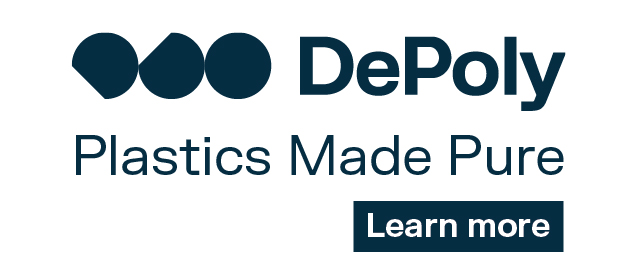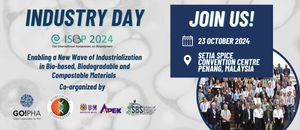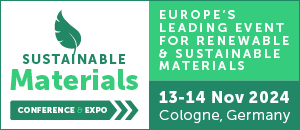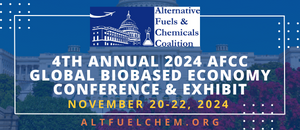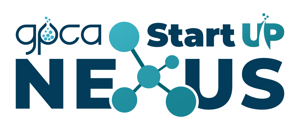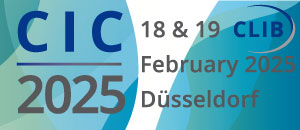
In the color spectrum of biotechnology, white biotechnology stands out as the industrial production and processing of chemicals, materials, and energy via cell factories like bacteria and yeast. In the bioeconomy, in which society uses renewable biological resources to create biobased products, white biotechnology acts as a critical technology driver. It not only reduces society’s dependence on fossil fuels but also consumes less energy, generates minimal waste, and produces more environmentally friendly products. With primary chemical production contributing 935 million metric tonnes of direct CO2 emissions in 2022, the advancement of white biotechnology is critical to creating more sustainable alternatives to traditional petroleum-based chemical manufacturing.
Certain compounds have been biomanufactured on an industrial scale for years, if not decades, including:
- Ethanol for biofuels
- Lactic acid for PLA (polylactic acid)
- Itaconic acid
- Succinic acid
Advancements in biotechnology tools and processes have expanded the scope of what can be created through industrial biomanufacturing, encompassing a diverse range of molecules and compounds with applications spanning from lubricants to packaging, textiles to additives, adhesives to leather, and more. Within this diverse range, an emerging subset of molecules have attracted the interest of numerous companies, both well-funded startups and multinational corporations. IDTechEx has analyzed over thirty-five different molecules and compounds in their market research report “White Biotechnology 2024-2034“; here are some of the most interesting molecules whose biomanufacturing development is worth monitoring.
Emerging Molecules Produced Through White Biotechnology
Polyamide precursors: one emerging category of biomanufactured molecules are key precursors for polyamides like PA 6 and PA 66. With hundreds of millions of tonnes of nylon produced globally every year, nylons represent a massive potential market for white biotechnology to address. Currently, precursors such as caprolactam and hexamethylenediamine (HMDA) are only produced through a petrochemical route, but California-based biotechnology company Geno has developed biosynthetic production pathways for such polyamide precursors. They are currently pursuing the commercialization of biosynthetic PA precursors with major chemical manufacturers as partners, including Covestro, Aquafil, and Asahi Kasei.
Spider silk: spider silk, referring to the protein fibers spun by spiders (spideroin), is an incredibly versatile and high-performance material. Its properties include high tensile strength, high stretchability, high toughness, and a high strength-to-weight ratio. To access these desirable properties for other applications, several companies have developed genetically engineered organisms (E.coli, yeast, or silkworms) to biomanufacture spider silk at scale. Such companies include Kraig Biocraft, AMSilk, and Spiber, the latter of which has raised well over $300 million in funding to scale the production of their spider silk.
Polyhydroxyalkanoates (PHAs): PHAs are a class of polyesters biosynthesized via fermentation. PHAs are produced by a wide range of microorganisms via multiple biosynthetic pathways that utilize glucose or fatty acids derived from numerous sources (i.e., organic matter and waste) as feedstock. PHAs are unique in that they are directly synthesized as polymers by the micro-organism, rather than the micro-organism synthesizing a biobased monomer that is then isolated and polymerized ex-vivo. The three key benefits of PHAs are their bio-origin, sustainability, and biodegradability. While PHAs have been on the radar as biodegradable alternatives to petroleum plastics for years, numerous companies are now leveling up their scale of PHA production to meet the increased demand for sustainable plastics.
Fatty acids: Short-chain fatty acids (SCFAs) and medium-chain fatty acids (MCFAs) have extensive applications in the chemical industry as precursors to numerous compounds (i.e., alcohols, triglycerides, esters, amines, amides, etc.). They are typically produced petrochemically, but several companies, such as Afyren and ChainCraft, are pursuing the production of fatty acids via anaerobic digestion. Their use of heterogeneous biomass (i.e., municipal organic waste, sewage sludge) as feedstock is notable, as heterogeneous biomass are typically difficult to use for industrial fermentation applications. Should they be able to scale their production capacity to cost-competitive levels, they have the ability to address a broad market in chemical production.
Mevalonic acid: mevalonic acid is a key chemical intermediate for isoprene, the main component of natural rubber; it can also act as a precursor for sustainable aviation fuel, solvents, cosmetics, and textiles. One startup, Visolis, used synthetic biology to develop a microbe that biosynthesizes mevalonic acid and is now looking to push into the production of biobased isoprene and sustainable aviation fuel; they already produce skin care products utilizing mevalonic acid as an ingredient. Though in the early stages of production, mevalonic acid presents an interesting opportunity, given its broad applicability across different verticals.
These profiled molecules are just the tip of the iceberg when it comes to the new types of molecules being produced through white biotechnology. For more extensive coverage, including assessments of over thirty-five different molecules and compounds, please see IDTechEx’s comprehensive report on “White Biotechnology 2024-2034”.

IDTechEx White Biotechnology Market Forecast
IDTechEx’s “White Biotechnology 2024-2034” report carefully explores the white biotechnology landscape, including evaluations of over 35 biomanufactured molecules, looking at critical aspects like their technology readiness level, key technical challenges, commercial players, applications, and more. IDTechEx also provides market forecasts that carefully segment the market by ten major biomanufactured molecules based on global production capacity, which are extrapolated in the 10-year forecast to explore each segment’s current capacity and potential for growth. Additionally, IDTechEx provides a comprehensive examination of critical application areas, a discussion of technology trends, and in-depth market and economic analysis. For further information on this market, including discussion on over 100 players, analysis of numerous biomanufacturing processes, and granular 10-year market forecasts, see the IDTechEx report, “White Biotechnology 2024-2034”.
For more information on this IDTechEx report, including downloadable sample pages, please visit www.IDTechEx.com/WhiteBiotech.
For the full portfolio of sustainability market research available from IDTechEx, please visit www.IDTechEx.com/Research/Sustainability.
IDTechEx guides your strategic business decisions through its Research, Subscription and Consultancy products, helping you profit from emerging technologies. For more information, contact research@IDTechEx.com or visit www.IDTechEx.com.
Upcoming Free-To-Attend Webinar
Creating a Circular Economy: Emerging Sustainable Materials to Watch in 2024
A team of analysts from IDTechEx will present a free-to-attend webinar on the topic on Tuesday 21 November 2023 – Creating a Circular Economy: Emerging Sustainable Materials to Watch in 2024.
As major brands and governments continue to adopt and refine their sustainability roadmaps, more sustainable materials are urgently needed to fulfill these sustainability targets. The necessity of replacing plastics with greener alternatives is especially relevant, as governments increasingly crack down on unnecessary plastic usage in a bid to reduce the environmental and health impacts of plastics. Such regulations have reached the global level, as the United Nations is currently developing a legally binding treaty to end plastic pollution.
The question is, which emerging technologies will be able to address this demand for sustainable plastic alternatives in numerous fields, such as fashion, packaging, and automotive? IDTechEx has explored this question through its sustainability market research portfolio and has identified several emerging sustainable material technologies of high interest. So, in this webinar, IDTechEx will provide a comprehensive overview of the most intriguing emerging sustainable technologies, as well as insights into their recent progress and outlook for 2024.
The technology areas covered in this webinar include:
- White Biotechnology
- Sustainable Plastic Packaging
- CO2 Utilization for Chemicals and Materials
- Emerging Alternative Leathers
Please click here to find out more and register your place on one of our three sessions.
Source
IDTechEx, press release, 2023-11-07.
Supplier
AFYREN
AMSilk GmbH
Aquafil S.p.A.
Asahi Kasei Corporation
ChainCraft
Covestro AG
IDTech Ex
Kraig Biocraft Laboratories, Inc.
Spiber
Share
Renewable Carbon News – Daily Newsletter
Subscribe to our daily email newsletter – the world's leading newsletter on renewable materials and chemicals





